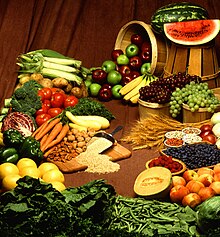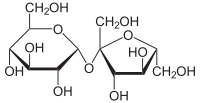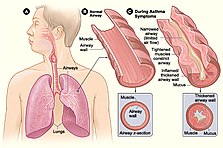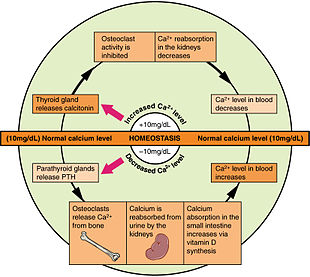We're for all- ALL are for us for the greater interest of Humanism-Truth-Facts-Friendship-Unity-Participation including Physico-Mental Sound Health with Spirituality, enrichment through ''TOTAL HEALTH SOLUTION'' to a Well-furnished GOALofTruth alloted for all in real sense ;
From wikipedia & other reliable sources ( Poets, Writers, Thinkers, Researchers, Free Lancers, Philosophers, Theologists, Scientists, Orators, Sociologists and Photographers +Artists-Musicians & etc.) we can learn as follows :

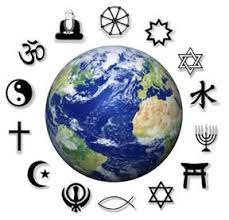
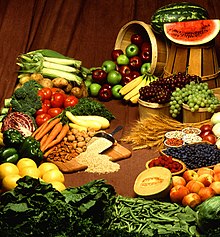
''Food is any substance consumed by an organism for nutritional support. Food is usually of plant, animal, or fungal origin, and contains essential nutrients, such as carbohydrates, fats, proteins, vitamins, or minerals. The substance is ingested by an organism and assimilated by the organism's cells to provide energy, maintain life, or stimulate growth. Different species of animals have different feeding behaviours that satisfy the needs of their unique metabolisms, often evolved to fill a specific ecological niche within specific geographical contexts.
Omnivorous humans are highly adaptable and have adapted to obtain food in many different ecosystems. The majority of the food energy required is supplied by the industrial food industry, which produces food with intensive agriculture and distributes it through complex food processing and food distribution systems. This system of conventional agriculture relies heavily on fossil fuels, which means that the food and agricultural system is one of the major contributors to climate change, accountable for as much as 37% of total greenhouse gas emissions.[1]
The food system has significant impacts on a wide range of other social and political issues including: sustainability, biological diversity, economics, population growth, water supply, and access to food. Food safety and food security are monitored by international agencies like the International Association for Food Protection, World Resources Institute, World Food Programme, Food and Agriculture Organization, and International Food Information Council.
Food is any substance consumed to provide nutritional support and energy to an organism.[2][3] It can be raw, processed or formulated and is consumed orally by animals for growth, health or pleasure. Food is mainly composed of water, lipids, proteins and carbohydrates. Minerals (e.g. salts) and organic substances (e.g. vitamins) can also be found in food.[4] Plants, algae and some microorganisms use photosynthesis to make their own food molecules.[5] Water is found in many foods and has been defined as a food by itself.[6] Water and fiber have low energy densities, or calories, while fat is the most energy dense component.[3] Some inorganic (non-food) elements are also essential for plant and animal functioning.[7]
Human food can be classified in various ways, either by related content or by how the food is processed.[8] The number and composition of food groups can vary. Most systems include four basic groups that describe their origin and relative nutritional function: Vegetables and Fruit, Cereals and Bread, Dairy, and Meat.[9] Studies that look into diet quality often group food into whole grains/cereals, refined grains/cereals, vegetables, fruits, nuts, legumes, eggs, dairy products, fish, red meat, processed meat, and sugar-sweetened beverages.[10][11][12] The Food and Agriculture Organization and World Health Organization use a system with nineteen food classifications: cereals, roots, pulses and nuts, milk, eggs, fish and shellfish, meat, insects, vegetables, fruits, fats and oils, sweets and sugars, spices and condiments, beverages, foods for nutritional uses, food additives, composite dishes and savoury snacks.[13]
A typical aquatic food web
In a given ecosystem, food forms a web of interlocking chains with primary producers at the bottom and apex predators at the top.[14] Other aspects of the web include detrovores (that eat detritis) and decomposers (that break down dead organisms).[14] Primary producers include algae, plants, bacteria and protists that acquire their energy from sunlight.[15] Primary consumers are the herbivores that consume the pants and secondary consumers are the carnivores that consume those herbivores. Some organisms, including most mammals and birds, diets consist of both animals and plants and they are considered omnivores.[16] The chain ends with the apex predators, the animals that have no known predators in its ecosystem.[17] Humans are often considered apex predators.[18]
Humans are omnivores finding sustenance in vegetables, fruits, cooked meat, milk, eggs, mushrooms and seaweed.[16] Cereal grain is a staple food that provides more food energy worldwide than any other type of crop.[19] Corn (maize), wheat, and rice account for 87% of all grain production worldwide.[20][21][22] Just over half of the worlds crops are used to feed humans (55 percent), with 36 percent grown as animal feed and 9 percent for biofuels.[23] Fungi and bacteria are also used in the preparation of fermented foods like bread, wine, cheese and yogurt.[24]
Photosynthesis is the ultimate source of energy and food for nearly all life on earth.[25] It is the main food source for plants, algae and certain bacteria.[26] Without this all organisms which depend on these organisms further up the food chain would be unable to exist, from coral to lions.[27] Energy from the sun is absorbed and used to transform water and carbon dioxide in the air or soil into oxygen and glucose. The oxygen is then released and the glucose stored as an energy reserve.[28]
Fleshy fruits (distinguishable from dry fruits like grain, seeds and nuts) can be further classified as stone fruits (cherries and peaches), pome fruits (apples, pears), berries (blackberry, strawberry), citrus (oranges, lemon), melons (watermelon, cantaloupe), Mediterranean fruits (grapes, fig), tropical fruits (banana, pineapple).[33] Vegetables refer to any other part of the plant that can be eaten, including roots, stems, leaves, flowers, bark or the entire plant itself.[37] These include root vegetables (potatoes and carrots), bulbs (onion family), flowers (cauliflower and broccoli), leaf vegetables (spinach and lettuce) and stem vegetables (celery and asparagus).[38][37]
Plants have high carbohydrate, protein and lipid content, with carbohydrates mainly in the form of starch, fructose, glucose and other sugars.[29] Most vitamins are found from plant sources, with the notable exceptions of vitamin D and vitamin B12. Minerals are also plentiful, although the presence of phytates can prevent their release.[29] Fruit can consist of up to 90% water, contain high levels of simple sugars that contribute to their sweet taste and have a high vitamin C content.[29][33] Compared to fleshy fruit (excepting Bananas) vegetables are high in starch,[39] potassium, dietary fiber, folate and vitamins and low in fat and calories.[40] Grains are more starch based[29] and nuts have a high protein, fibre, vitamin E and B content.[33] Seeds are a good source of food for animals because they are abundant and contain fibre and healthful fats, such as omega-3 fats.[41][42]
Animals that only eat plants are called herbivores, with those that mostly just eat fruits known as frugivores,[43] leaves, while shoot eaters are folivores (pandas) and wood eaters termed xylophages (termites).[44] Frugivores include a diverse range of species from annelids to elephants, chimpanzees and many birds.[45][46][47] About 182 fish consume seeds or fruit.[48] There are many types of grasses, adapted to different locations, that animals (domesticated and wild) use as their main source of nutrients.[49]
Humans only eat about 200 out of the worlds 400 000 plant species, despite at least half of them being edible.[50] Most human plant-based food comes from maize, rice, and wheat.[50] Plants can be processed into breads, pasta, cereals, juices and jams or raw ingredients such as sugar, herbs, spices and oils can be extracted.[29] Oilseeds are often pressed to produce rich oils - sunflower, flaxseed, rapeseed (including canola oil) and sesame.[51]
Many plants and animals have coevolved in such a way that the fruit is good source of nutrition to the animal who then excretes the seeds some distance away allowing greater dispersal.[52] Even seed predation can be mutually beneficial as some seeds can survive the digestion process.[53][54] Insects are major eaters of seeds,[41] with ants being the only real seed dispersers.[55] Birds, although being major dispersers,[56] only rarely eat seeds as a source of food and can be identified by their thick beak that is used to crack open the seed coat.[57] Mammals eat a more diverse range of seeds as they are able to crush harder and larger seeds with their teeth.[58]
Animals are used as food either directly or indirectly. This includes meat, eggs, shellfish and dairy products like milk and cheese.[59] They are an important source or protein and are considered complete proteins for human consumption as they contain all the essential amino acids that the human body needs.[60] One 4-ounce (110 g) steak, chicken breast or pork chop contains about 30 grams of protein. One large egg has 7 grams of protein, a 4-ounce (110 g) serving of cheese about 15 grams and 1 cup of milk about 8.[60] Other nutrients found in animal products include calories, fat, essential vitamins (including B12) and minerals (including zinc, iron, calcium, magnesium).[60]
Food products produced by animals include milk produced by mammary glands, which in many cultures is drunk or processed into dairy products (cheese, butter, etc.). In addition, birds and other animals lay eggs, which are often eaten, and bees produce honey, a reduced nectar from flowers, which is a popular sweetener in many cultures. Some cultures consume blood, sometimes in the form of blood sausage, as a thickener for sauces, or in a cured, salted form for times of food scarcity, and others use blood in stews such as jugged hare.[61]
Some cultures and people do not consume meat or animal food products for cultural, dietary, health, ethical, or ideological reasons. Vegetarians choose to forgo food from animal sources to varying degrees. Vegans do not consume any foods that are or contain ingredients from an animal source.
Animals, specifically humans, have five different types of tastes: sweet, sour, salty, bitter, and umami. As animals have evolved, the tastes that provide the most energy (sugar and fats) are the most pleasant to eat while others, such as bitter, are not enjoyable.[62] Water, while important for survival, has no taste.[63] Fats, on the other hand, especially saturated fats, are thicker and rich and are thus considered more enjoyable to eat.
Sweet Structure of sucrose
Structure of sucrose
Generally regarded as the most pleasant taste, sweetness is almost always caused by a type of simple sugar such as glucose or fructose, or disaccharides such as sucrose, a molecule combining glucose and fructose.[64] Complex carbohydrates are long chains and thus do not have the sweet taste. Artificial sweeteners such as sucralose are used to mimic the sugar molecule, creating the sensation of sweet, without the calories. Other types of sugar include raw sugar, which is known for its amber color, as it is unprocessed. As sugar is vital for energy and survival, the taste of sugar is pleasant.
The stevia plant contains a compound known as steviol which, when extracted, has 300 times the sweetness of sugar while having minimal impact on blood sugar.[65]
Sourness is caused by the taste of acids, such as vinegar in alcoholic beverages. Sour foods include citrus, specifically lemons, limes, and to a lesser degree oranges. Sour is evolutionarily significant as it is a sign for a food that may have gone rancid due to bacteria.[66] Many foods, however, are slightly acidic, and help stimulate the taste buds and enhance flavor.
Saltiness is the taste of alkali metal ions such as sodium and potassium. It is found in almost every food in low to moderate proportions to enhance flavor, although to eat pure salt is regarded as highly unpleasant. There are many different types of salt, with each having a different degree of saltiness, including sea salt, fleur de sel, kosher salt, mined salt, and grey salt. Other than enhancing flavor, its significance is that the body needs and maintains a delicate electrolyte balance, which is the kidney's function. Salt may be iodized, meaning iodine has been added to it, a necessary nutrient that promotes thyroid function. Some canned foods, notably soups or packaged broths, tend to be high in salt as a means of preserving the food longer. Historically salt has long been used as a meat preservative as salt promotes water excretion. Similarly, dried foods also promote food safety.
Bitterness is a sensation often considered unpleasant characterized by having a sharp, pungent taste. Unsweetened dark chocolate, caffeine, lemon rind, and some types of fruit are known to be bitter.''
We're for all- ALL are for us for the greater interest of Humanism-Truth-Facts-Friendship-Unity-Participation to a Well-furnished GOAL of Truth from which all shall have ++++;
We're indebted to WIKIPEDIA +WHO for a short while and as 'Guardian QUOTATION' from Global WISER ONE. And have quoted many images, article's, writings etc. by great & humanist writers+++ from global thinkers, Well-wishers, Wiseman, Humanists and Others Living-Nonlivings in favor of HUMANISM to share more answers of Researchers-readers+++++....
To reach the 'GOAL of FULFILNESS' unitedly to alive in the "DESTINATION of TRUTH-FACTS-CHARMEST AMICABLITY" of Natural Joyful POSSIBILITIES+++
BREAST CANCER, TUMOR, Arsenic+Chemical Poisoning, Corona, Heart-Lung diseases, Neurological-Hormonal-Immunal-Infectious diseases with related complexities are possible to cure properly-easily-scientifically-accurately (100%) by our positive medical services only with+++++balance confirming
Medicine-Food control-proper nursing-medicinal massage-Medicinal Yogas- Meditation, Physiotherapy special etc. without side effects & Repeatation as per contract through user-friendly approved ways of CURE++++. please fill our form as below or click:
After confirming contract-letter between you+++. We serve you properly with no Chemo-therapy-radiation therapy -SURGICAL Complexities (Physical-Mental) to CURE+++ upto our Limit to recover your both-health from illness.






